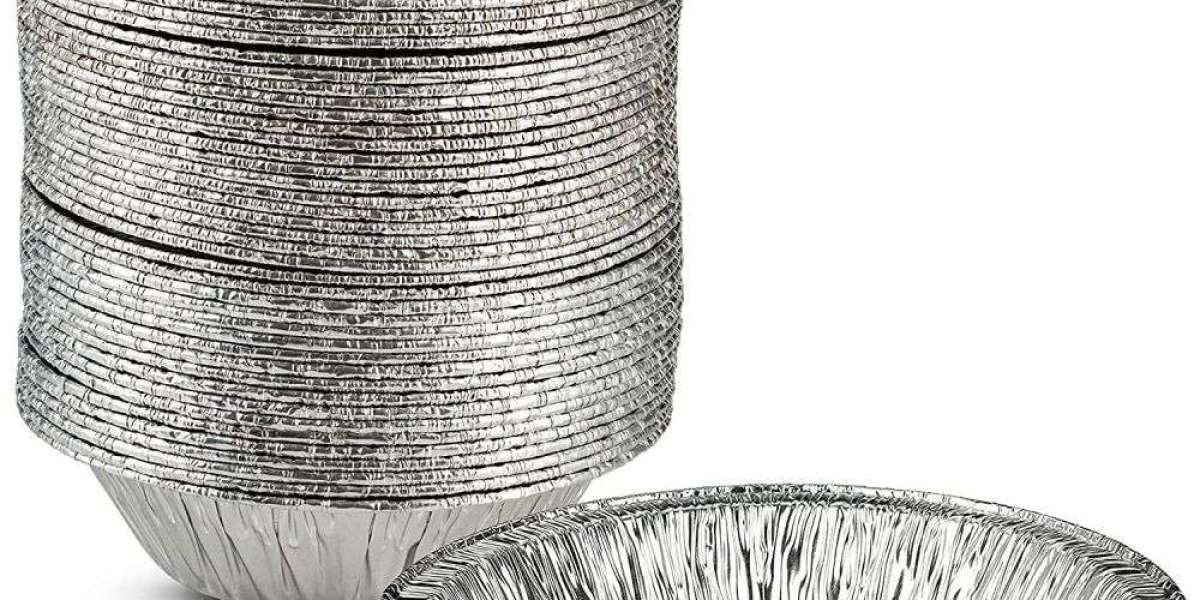Brownies—those decadent, fudgy delights that tantalize taste buds and evoke nostalgia—are a perennial favorite in the world of desserts. Their rich, chocolatey goodness brings joy to many occasions, from casual gatherings to extravagant celebrations. When it comes to baking brownies, the choice of pan can significantly influence the outcome. Disposable aluminum pans have gained popularity for their convenience and versatility. Let’s explore the delightful world of brownie baking in disposable aluminum pans and uncover tips that will elevate your dessert game!
Understanding Disposable Aluminum Pans
Types of Aluminum Pans
Disposable aluminum pans come in various shapes and sizes, from rectangular to round, and even deep-dish versions. The most common types for brownies are the standard rectangular pans, which are typically 8x8 inches or 9x13 inches. Each size has its own unique advantages depending on the recipe and desired texture.
Benefits of Using Aluminum Pans
Aluminum pans are lightweight and conduct heat efficiently, leading to evenly baked brownies. They require no cleanup—simply toss them after use! This makes them ideal for parties, picnics, or any occasion where convenience is key.
Selecting the Right Pan Size
Common Sizes for Brownies
When choosing a pan, consider the size of your brownie batch. For a small family treat, an 8x8 pan works wonders. For larger gatherings, a 9x13 pan can accommodate more servings.
Impact of Size on Baking Time
The size of the pan affects baking time significantly. A smaller pan will yield thicker brownies, requiring longer bake times, while a larger pan will produce thinner brownies that cook more quickly. Adjusting the time based on pan size ensures perfectly baked treats.
Preparing the Pan
Greasing vs. Lining
While disposable aluminum pans are often non-stick, greasing the bottom and sides with butter or cooking spray can be beneficial. Alternatively, lining the pan with parchment paper allows for easy removal. This choice can be particularly helpful for intricate recipes or when you want to maintain the pristine appearance of your brownies.
importance of Proper Preparation
Properly preparing your pan sets the stage for baking success. A well-prepared pan ensures that brownies do not stick and allows for easy cleanup, making the overall process more enjoyable.
Choosing the Right Brownie Recipe
Classic vs. Gourmet Brownies
Decide whether you want a classic brownie or something more extravagant. Classic recipes provide a rich chocolate flavor, while gourmet versions may incorporate unique ingredients like sea salt, espresso, or nuts.
Adjusting Recipes for Aluminum Pans
When using aluminum pans, consider adjusting your baking time. Recipes designed for glass or ceramic dishes may require less time when baked in aluminum due to its superior heat conductivity.
Mixing the Batter
Key Ingredients for Perfect Brownies
Your brownie batter should include high-quality cocoa powder, sugar, eggs, and butter. Some recipes might call for flour or baking powder to achieve the desired texture. The quality of your ingredients will directly impact the final product.
The Art of Mixing: Overmix vs. Undermix
Mixing is crucial! Overmixing can lead to dense brownies, while undermixing might prevent proper incorporation of ingredients. Aim for a smooth batter with a few lumps remaining for the best texture.
Pouring the Batter
Techniques for Even Distribution
Pour the batter into the prepared pan and use a spatula to spread it evenly. This ensures uniform baking and prevents uneven edges, which can lead to overcooked corners.
Avoiding Overfilling the Pan
Be mindful not to overfill the pan. Leaving about half an inch from the top allows the brownies to rise without spilling over.
Baking Essentials
Oven Temperature: The Goldilocks Zone
Preheat your oven to the specified temperature in your recipe—usually around 350°F (175°C). An accurately preheated oven is essential for even baking.
Using a Baking Sheet for Stability
For added stability, place your aluminum pan on a baking sheet before putting it in the oven. This prevents any spills and makes it easier to handle.
Monitoring the Baking Process
Signs of Doneness
Monitor your brownies as they bake. Look for a slight sheen on top and edges that begin to pull away from the pan. A toothpick inserted into the center should come out with a few moist crumbs but not wet batter.
The Toothpick Test Explained
The toothpick test is a classic method for checking doneness. If it comes out clean or with a few crumbs, your brownies are ready. If it’s wet, give them a few more minutes in the oven.
Cooling Your Brownies
Why Cooling is Crucial
Once baked, allow your brownies to cool in the pan for at least 10-15 minutes. Cooling helps them set, making it easier to cut into neat squares without crumbling.
Techniques for Efficient Cooling
For quicker cooling, place the pan on a wire rack. This allows air to circulate beneath, speeding up the process while preventing sogginess.
Cutting the Brownies
Tips for Neat Slices
Use a sharp knife to cut your brownies, wiping the blade between cuts to maintain clean edges. This ensures that each piece looks as delectable as it tastes.
Tools for Cutting Brownies
Consider using a plastic knife or a pizza cutter for a different approach. These tools can provide a clean cut and are particularly effective for gooey brownies.
Storing Leftover Brownies
Best Practices for Storage
If you have leftovers, store them in the aluminum pan with a lid or plastic wrap to maintain freshness. This method is convenient, as you can reuse the pan for storage.
Using Aluminum Pans for Storage
Aluminum pans are perfect for short-term storage. Just ensure they are fully cooled before covering to avoid condensation, which can lead to sogginess.
Creative Variations
Adding Mix-Ins for Flavor
Get creative! Add chocolate chips, nuts, or dried fruits to your batter for an extra flavor dimension. Swirls of peanut butter or caramel can also elevate your brownies to gourmet status.
Swirling Techniques for Aesthetic Appeal
For visual flair, create swirls with a knife by dragging it through the batter before baking. This technique not only enhances aesthetics but also adds a delightful combination of flavors.
Using Brownies for Special Occasions
Brownies as Gifts
Brownies make excellent gifts! Consider wrapping them in decorative packaging for birthdays or holidays. A personalized touch can turn a simple treat into a cherished present.
Decorating for Parties
For gatherings, decorate your brownies with frosting, sprinkles, or edible glitter to match the theme. This adds a festive touch and makes them even more enticing.
Troubleshooting Common Issues
What to Do if Brownies are Overbaked
If your brownies turn out overbaked and dry, consider serving them with ice cream or whipped cream to add moisture. They can also be crumbled over yogurt for a delightful dessert.
Fixing Fudgy Brownies
For brownies that are too fudgy, ensure that you’re using the correct pan size and baking time. Adjust your recipe next time to include a touch more flour for a lighter texture.
Cleaning Up
Easy Cleanup Tips for Aluminum Pans
One of the joys of using disposable aluminum pans is the easy cleanup! Simply discard the pan after use. If you’ve lined it with parchment, cleanup is even simpler.
Recycling Aluminum Pans
If you prefer sustainability, consider recycling your aluminum pans instead of throwing them away. Check local recycling guidelines to ensure proper disposal.
Conclusion
Baking brownies in disposable aluminum pans is a delightful and convenient process that can yield scrumptious results. With the right tips and techniques, you can create brownies that are not only delicious but also visually appealing. Embrace the joy of baking, experiment with flavors, and celebrate your brownie-making journey! Happy baking!








